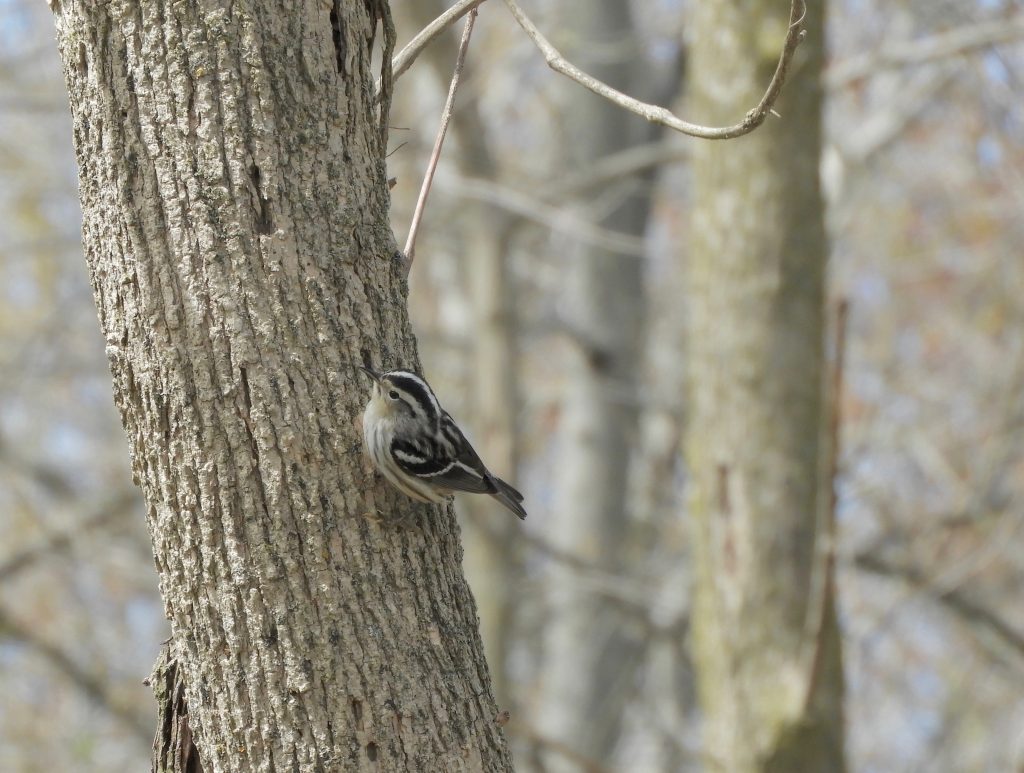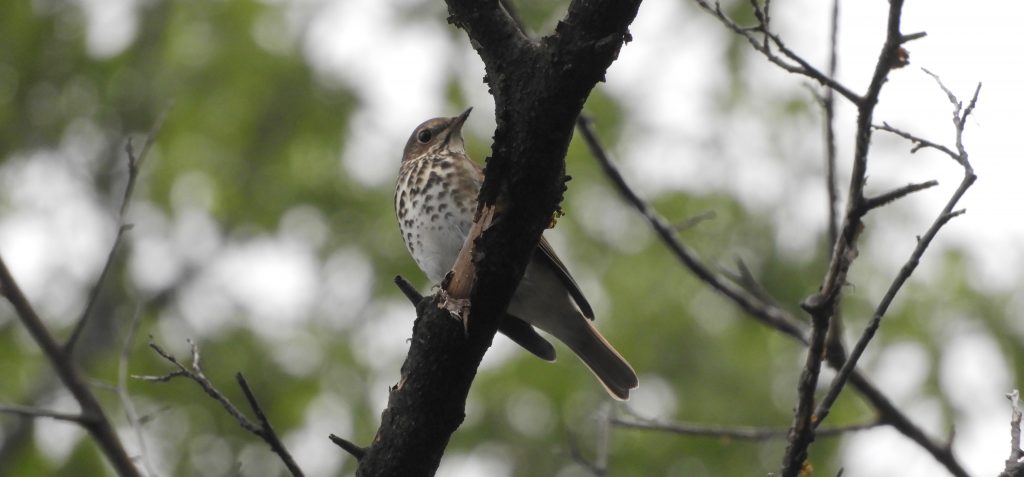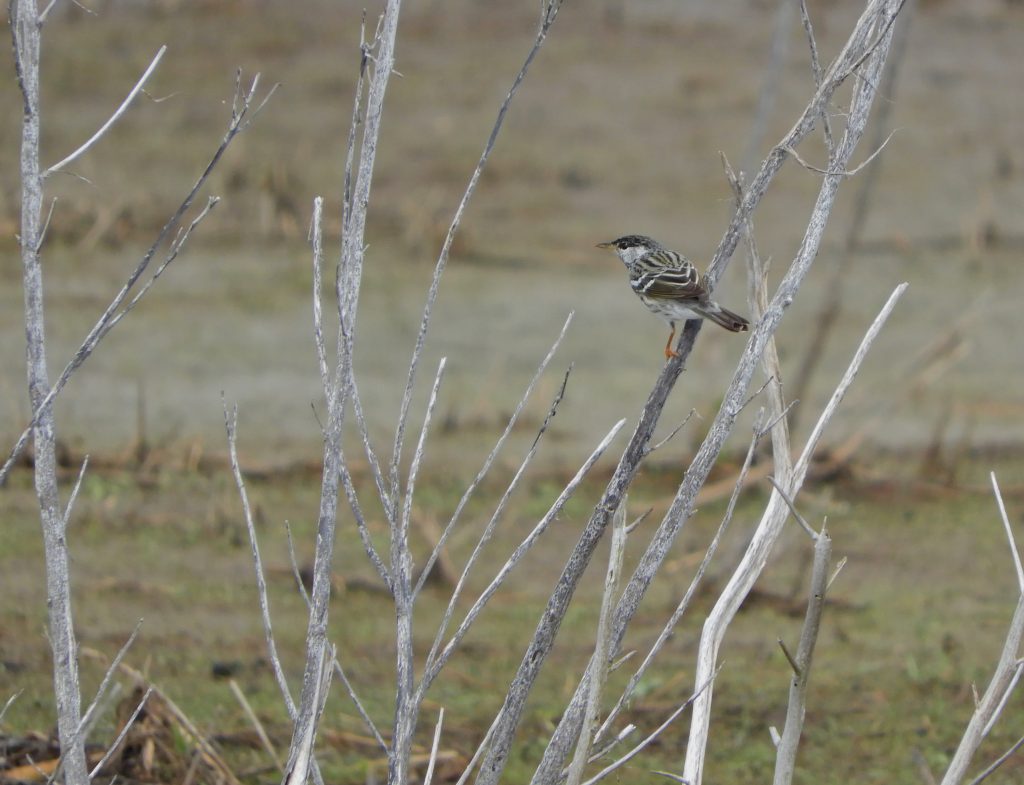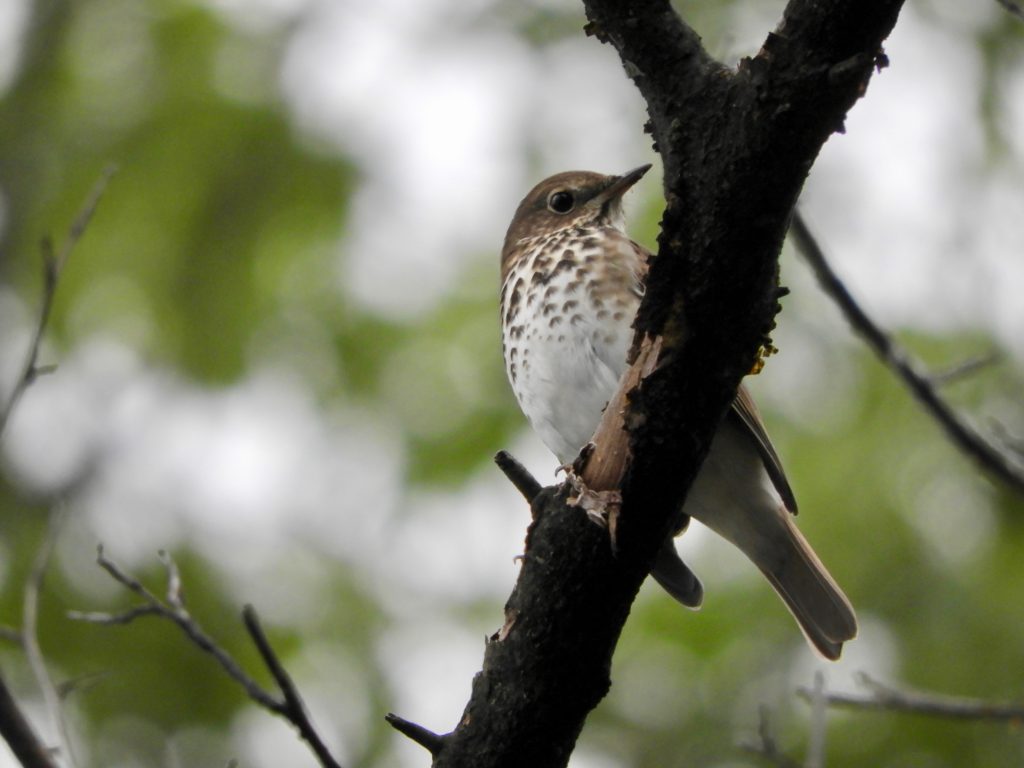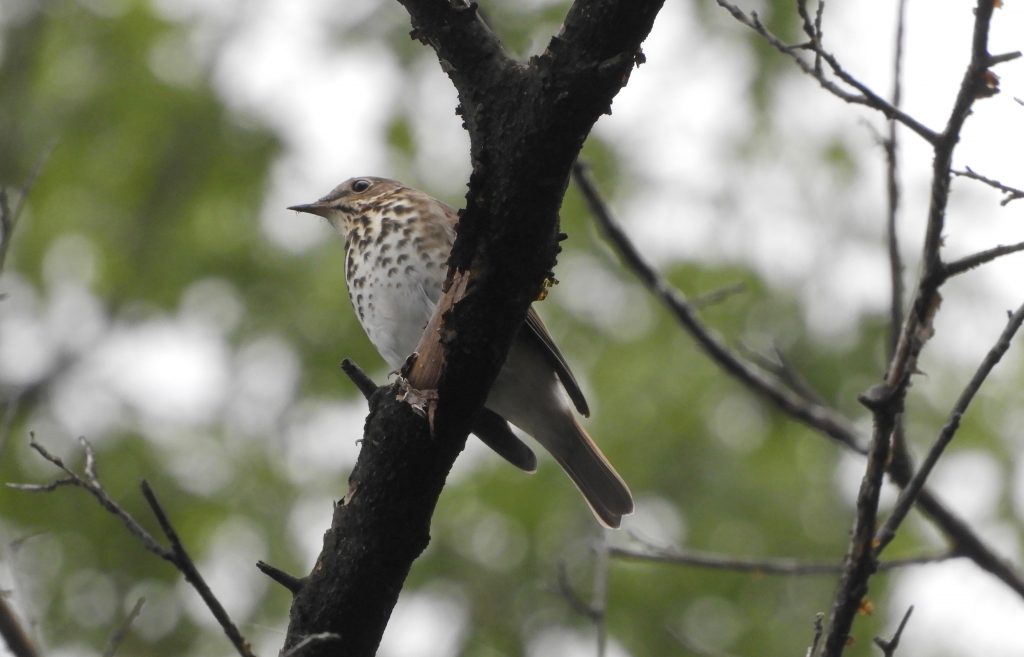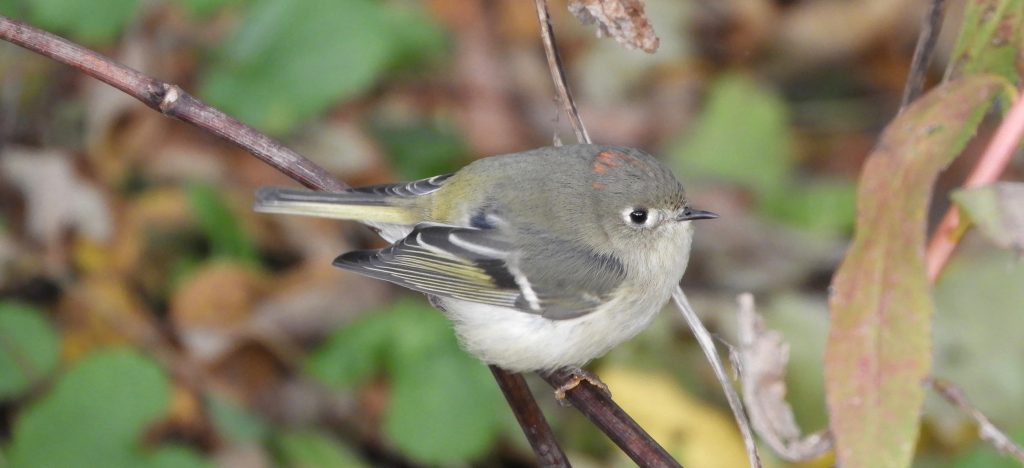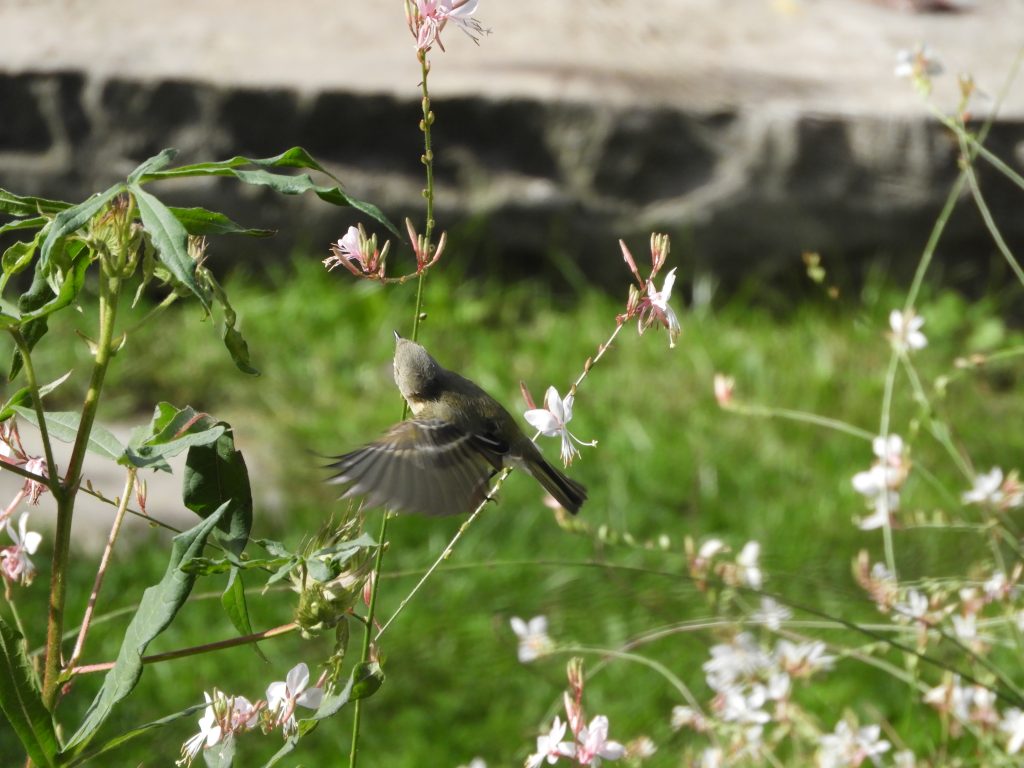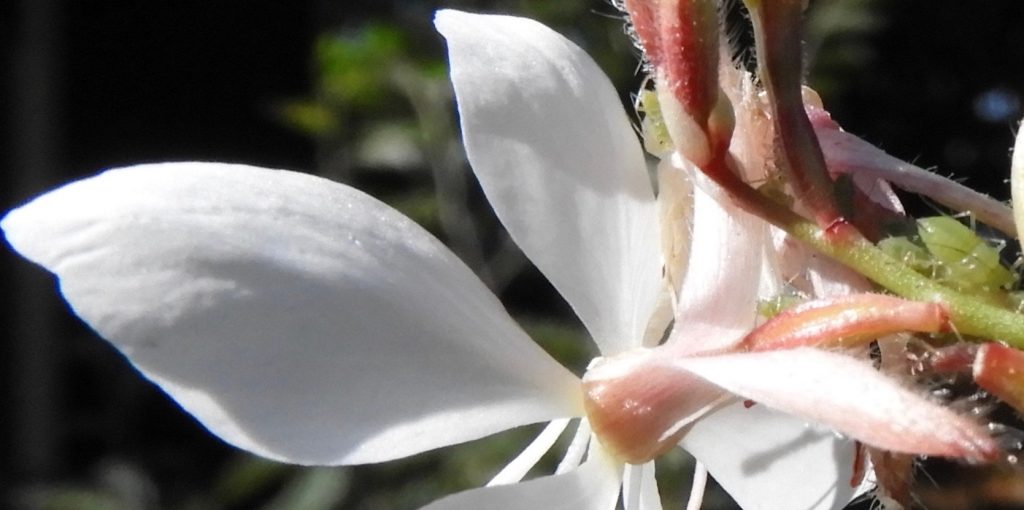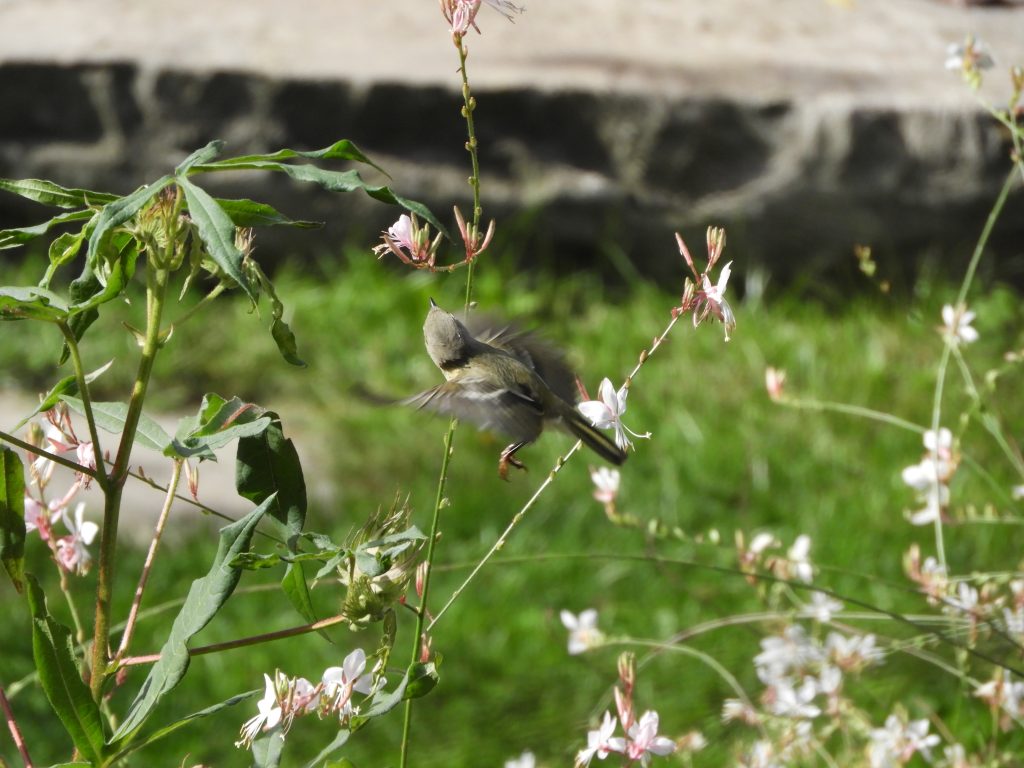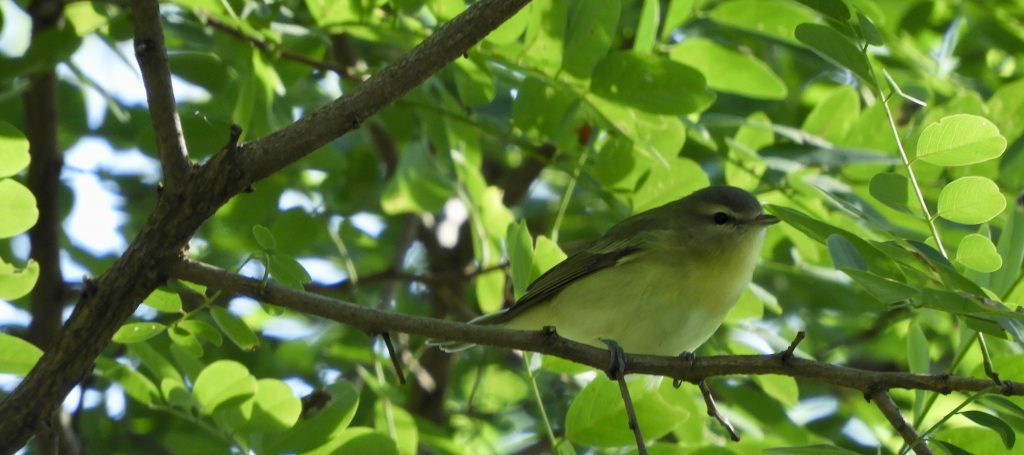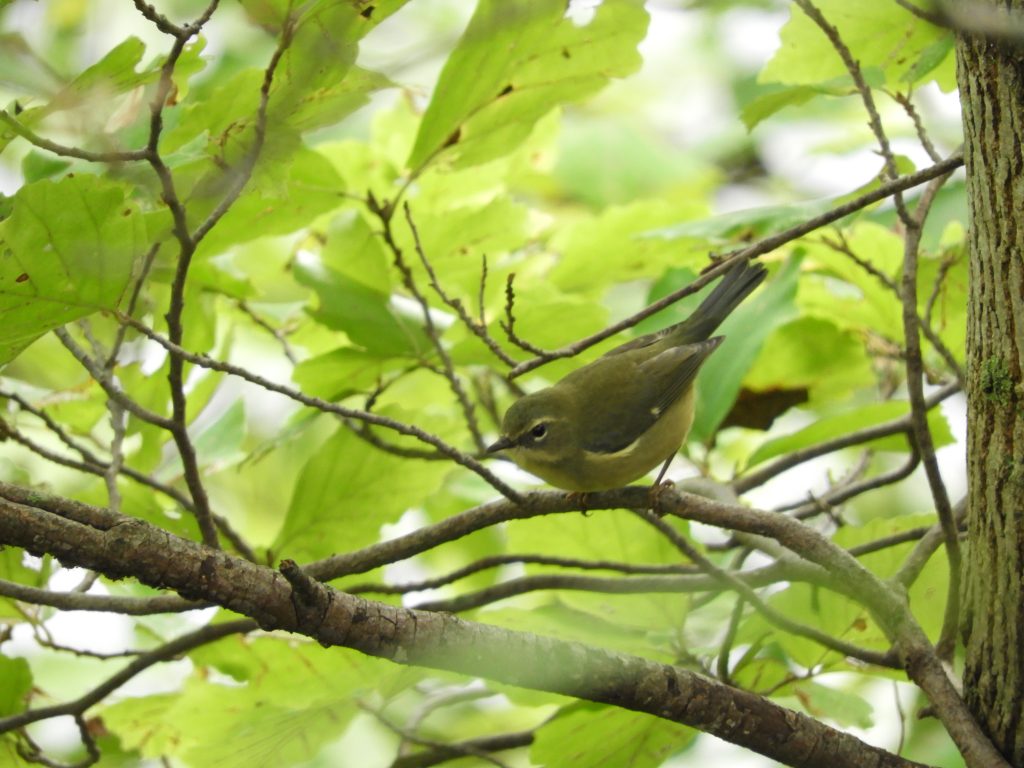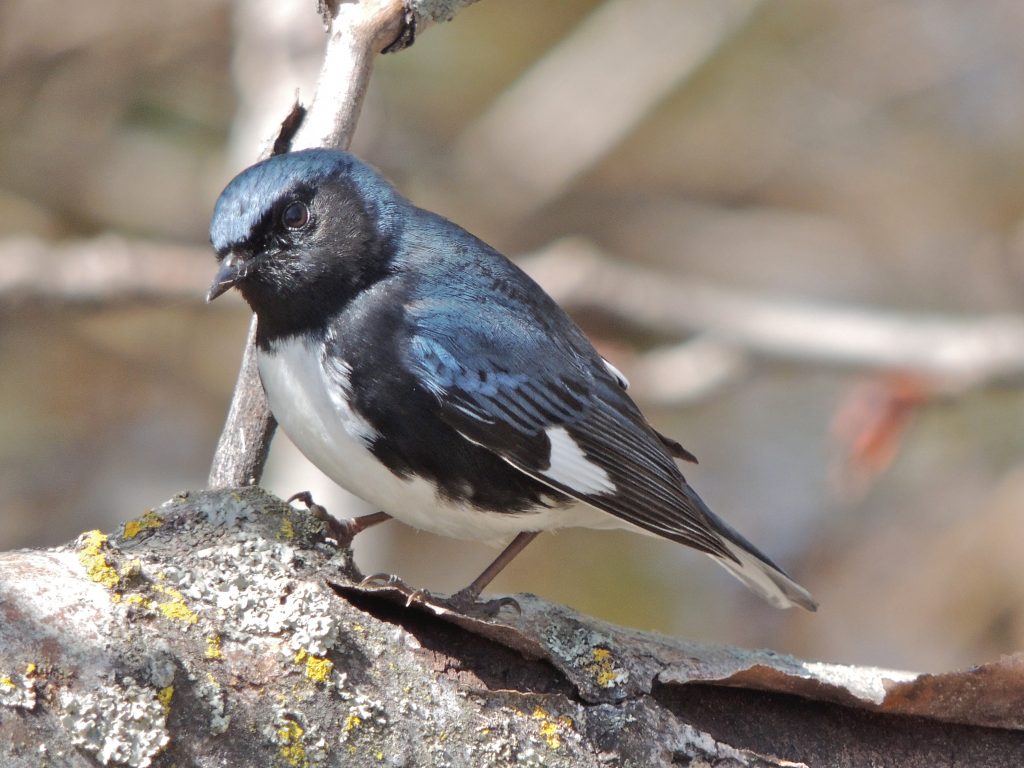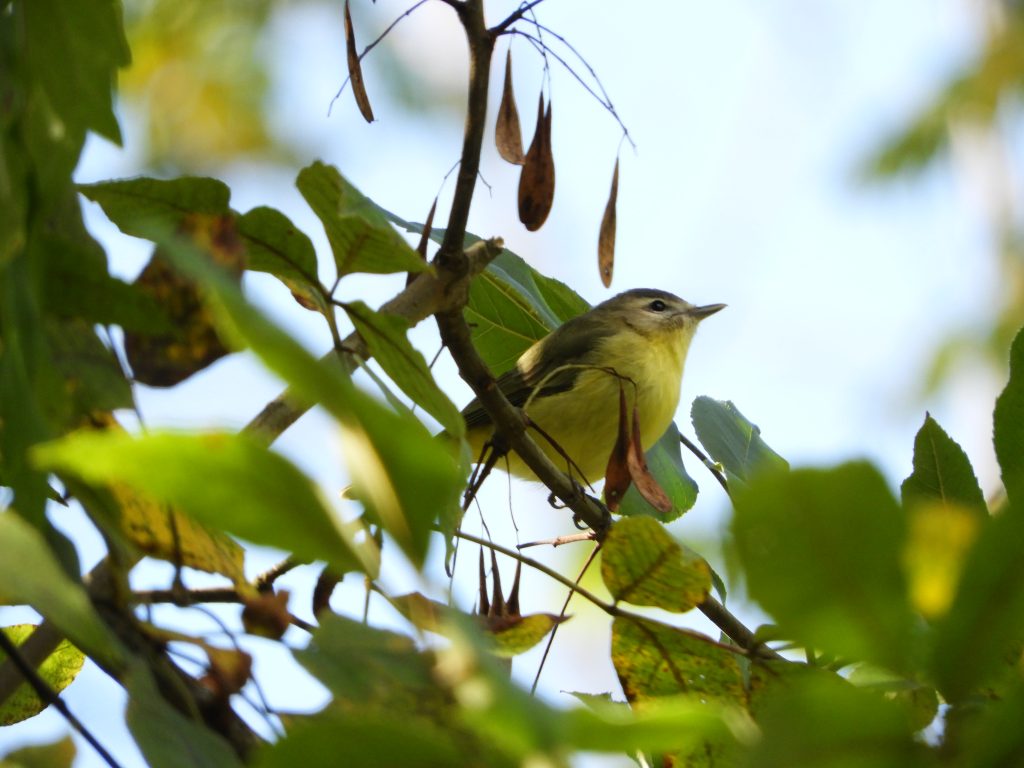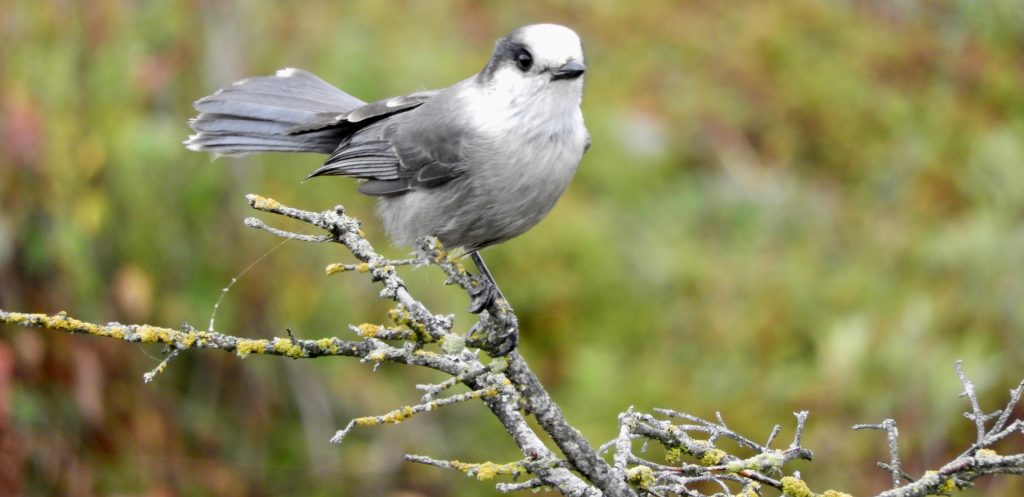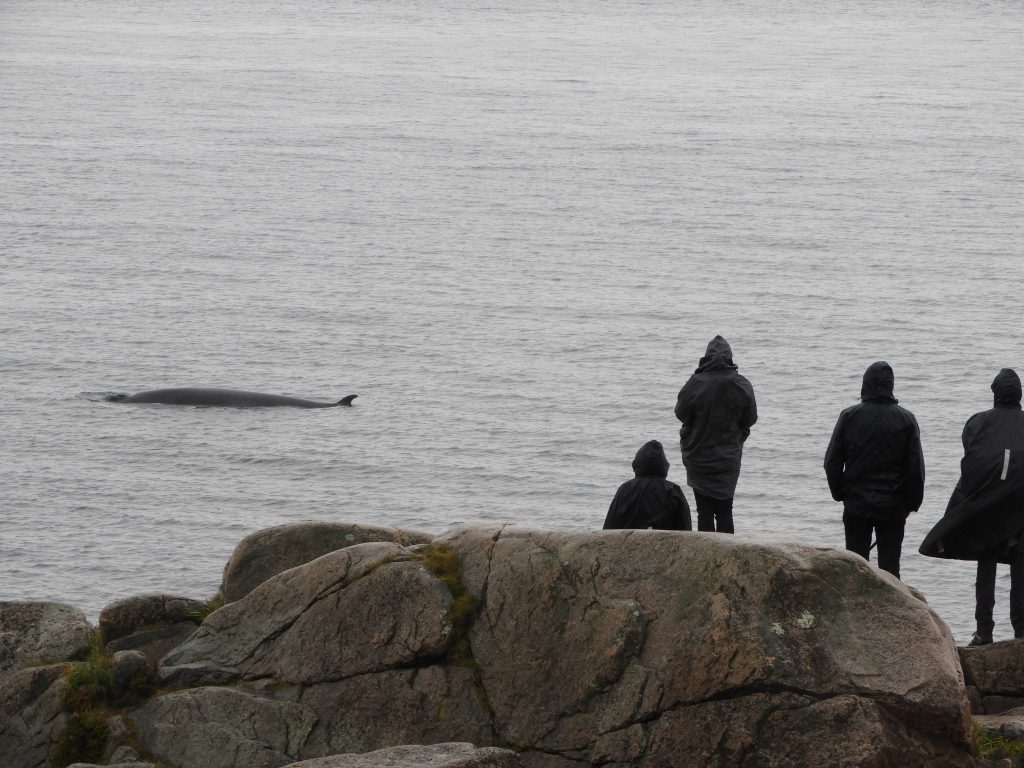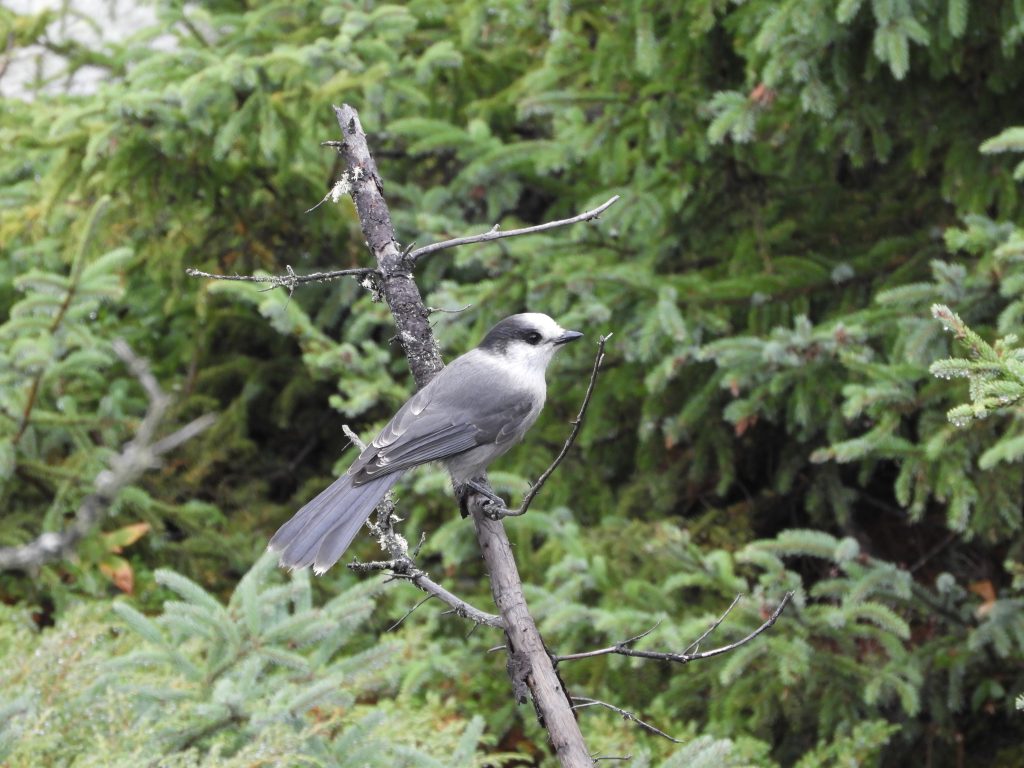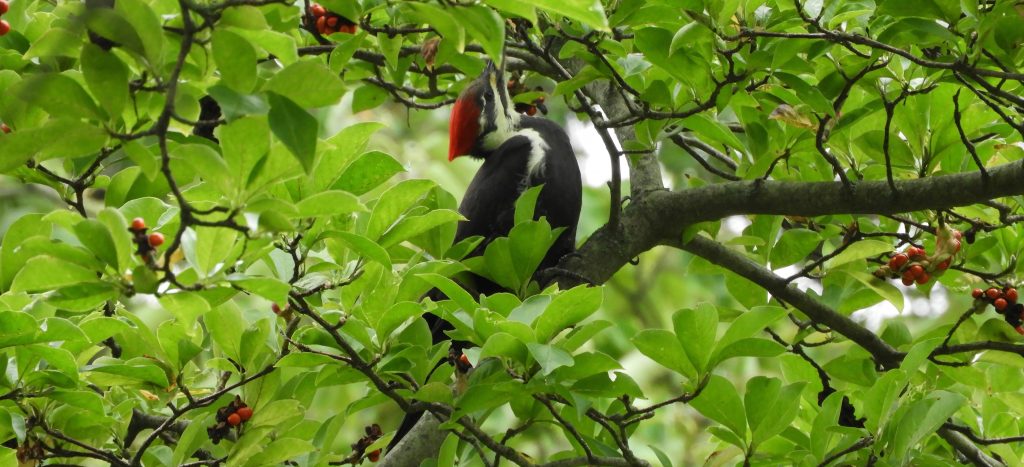
RBG. Arboretum, Hamilton ON. October 8 2021. Burlington. There is a large collection of magnolia trees in Royal Botanical Gardens’ Arboretum, it straddles a short stretch of one of our transect routes. Needless to say, it is a very popular attraction in late April and May, deservedly so. But once the flowers are finished, I don’t think magnolias have a lot going for them, not as landscape trees anyway. In mid fall, about now, these particular magnolias carry bold clusters of bright red fruit and they become attractive once more, but attractive to birds not to horticulture tourists.
This morning my transect had been quite uneventful until I approached the magnolias, then I became aware of the soft hum of American Robins chattering, whistling and singing softly among themselves. I knew at once what all the fuss was about, it was those magnolia fruits. So, I moved in slowly, made myself comfortable and watched: the robins were gorging themselves on the juicy clusters and, like gluttons everywhere, were endlessly moving around looking for a bigger and better treat. I have watched this feeding frenzy activity in previous years and on one occasion Northern Flickers made up half the mob. I observed for a long time and started to suspect that the fruit was a little over-the-top, fermented and alcoholic and if birds can be said to act silly, the robins and flickers surely were.
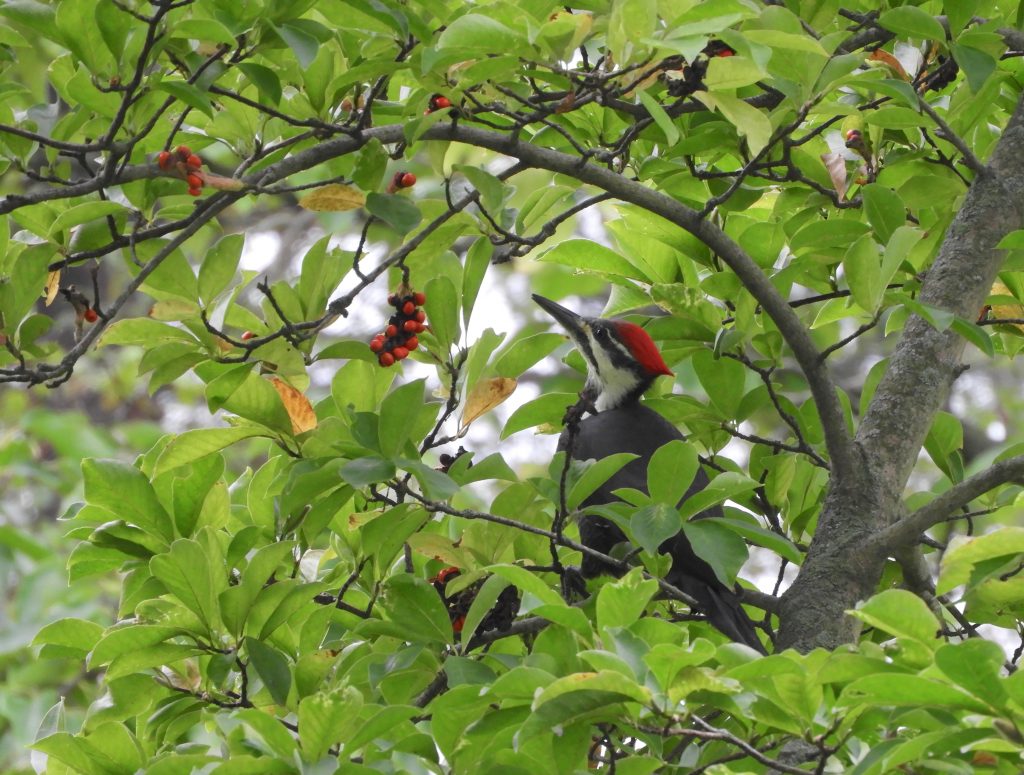
A bit of overhead movement in the pines caught my attention and I was pleased to watch a couple of Yellow-rumped Warblers picking for insects. Then I heard the ringing laugh of a Pileated Woodpecker and saw one fly past, quite close to me and through the magnolias to the woods beyond. Moments later she doubled back and joined in the magnolia feast (she, because females have a black moustache, whereas the males have red). Now, any opportunity to see and photograph a Pileated Woodpecker is worth stopping what you’re doing for, they are 50/50 either bold as brass or evasive. This one was bold and paid me no attention, she was just happy to be sharing the fresh fruit.
She was My Bird of the Day without opposition until much later when I saw a Black and White Warbler, a good sighting at any time, but not quite as spectacular, eye-catching or entertaining as the woodpecker, so it took second place.
